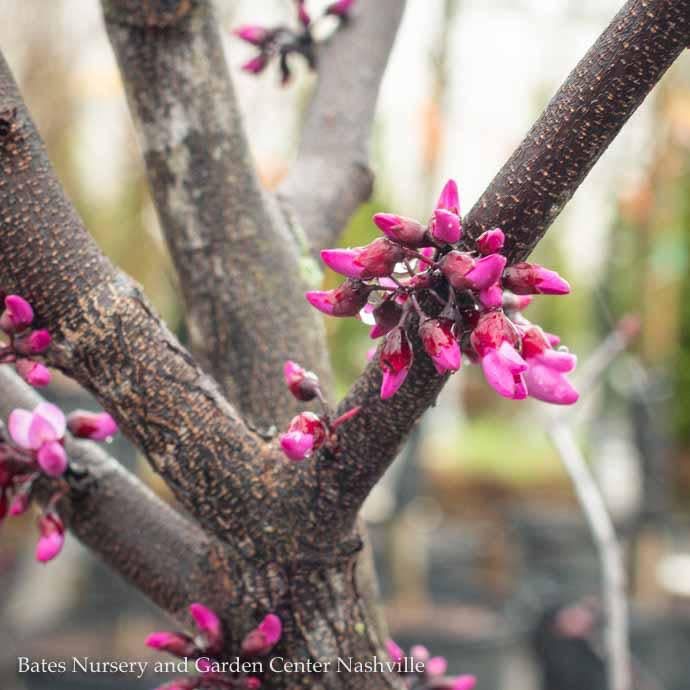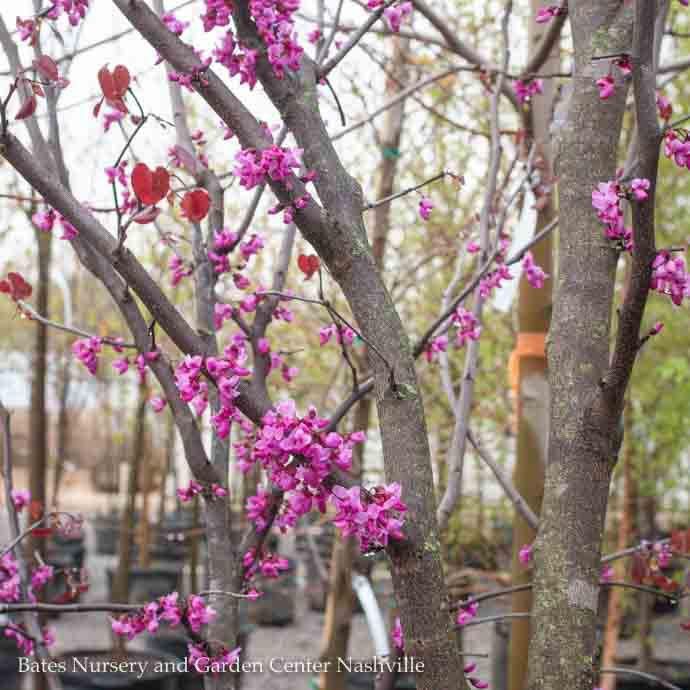#15 Cercis x Merlot/ Purple Foliage Redbud
#15 Cercis x Merlot/ Purple Foliage Redbud
SCIENTIFIC NAME: Cercis x ‘Merlot’, PP22297
COMMON NAME: Merlot Redbud
GARDEN SIZE: 12–15 feet tall by 12–15 feet wide
GROWTH RATE: Moderate
USDA ZONE: 6–9
EXPOSURE: Full sun to part shade. Prefers at least 4–6 hours of direct sunlight daily; some afternoon shade is beneficial in hot southern climates.
WATER & SOIL: Moist, well-drained soils are best. Tolerates a wide range of soil types including clay and loam, provided drainage is adequate. Avoid wet, poorly drained sites. Once established, it is moderately drought tolerant.
HABIT (FORM): Tight, dense, semi-upright with a refined, compact form
FOLIAGE: Deciduous; thick, glossy, wine-red to burgundy leaves
FLOWERS: Bright lavender-pink blooms appear in spring before the foliage
PLANT ORIGIN: Hybrid; an improvement over Forest Pansy with enhanced heat and drought tolerance from its Texas Redbud parentage
WILDLIFE SUPPORT: As a hybrid, whether this plant acts as a local plant depends on how far it diverges from the straight species. May or may not be a host plant for local butterflies and moths, and could be a food source for pollinators, birds, and small mammals. Supplies shelter and nesting sites.
FERTILIZING: Generally low-fertility needs. Apply organic compost in early spring if growth appears weak or leaves are pale.
PRUNING: Prune after flowering to shape or remove crossing branches. Avoid heavy pruning, as this species does not respond well to severe cuts. Remove dead or diseased wood at any time.
TOXICITY FLAGS: Non-toxic to humans and pets.
USES: Specimen, understory accent tree


